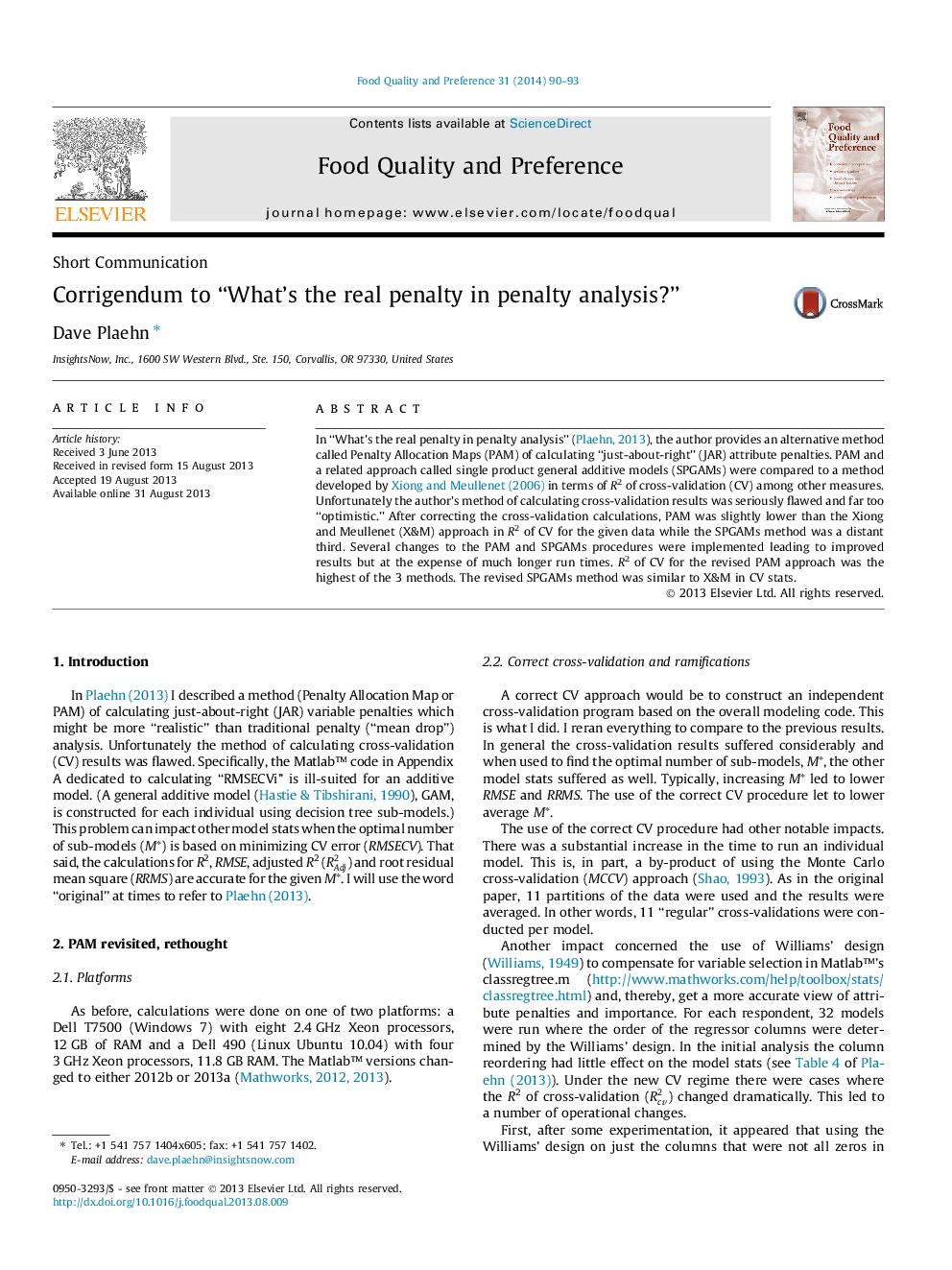| Article ID | Journal | Published Year | Pages | File Type |
|---|---|---|---|---|
| 4317306 | Food Quality and Preference | 2014 | 4 Pages |
•Penalties from traditional penalty analysis (TPA) tend to be inflated.•An alternative approach called Penalty Allocation Map (PAM) is proposed.•With PAM individual models are made.•Generalized additive modeling (GAM) provided robust models.•PAM penalties appear to be reasonable in size.
In “What’s the real penalty in penalty analysis” (Plaehn, 2013), the author provides an alternative method called Penalty Allocation Maps (PAM) of calculating “just-about-right” (JAR) attribute penalties. PAM and a related approach called single product general additive models (SPGAMs) were compared to a method developed by Xiong and Meullenet (2006) in terms of R2 of cross-validation (CV) among other measures. Unfortunately the author’s method of calculating cross-validation results was seriously flawed and far too “optimistic.” After correcting the cross-validation calculations, PAM was slightly lower than the Xiong and Meullenet (X&M) approach in R2 of CV for the given data while the SPGAMs method was a distant third. Several changes to the PAM and SPGAMs procedures were implemented leading to improved results but at the expense of much longer run times. R2 of CV for the revised PAM approach was the highest of the 3 methods. The revised SPGAMs method was similar to X&M in CV stats.
